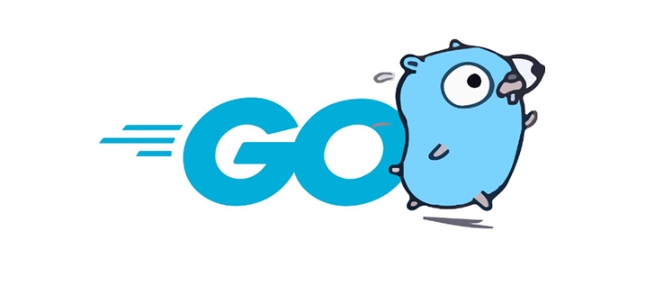How does the switch statement work in Go?
Jul 30, 2025 am 05:11 AMGo's switch statement will not be executed throughout the process by default and will automatically exit after matching the first condition. 1. The switch starts with a keyword and can have one or no values; 2. The case matches from top to bottom in order, only the first match is run; 3. Multiple conditions can be listed by commas to match the same case; 4. There is no need to add break manually, but can be forced through; 5. default is used for unmatched cases, usually placed at the end.

The switch statement in Go works a bit differently compared to other languages like C or JavaScript, but it's designed to be clean and intuitive once you get used to its style. Unlike some languages where you have to break every case to avoid fall-through, Go doesn't do that by default — which can be both helpful and a source of confusion if you're coming from another language.

Here's how it really works:
Basic syntax and flow
A switch in Go starts with the keyword switch , followed by a value to compare. Then come the case s — each one checks against that value. The first matching case runs, and then it exits the switch block automatically.

For example:
fruit := "apple"
switch fruit {
case "apple":
fmt.Println("It's an apple!")
case "banana":
fmt.Println("It's a banana.")
default:
fmt.Println("Unknown fruit")
} This will print:
"It's an apple!"

You don't need to write break at the end of each case — Go does that for you. That helps prevent accidental fall-through bugs.
Multiple conditions in one case
If you want a single case to match multiple values, just list them separated by commas.
Like this:
letter := "a"
switch letter {
case "a", "e", "i", "o", "u":
fmt.Println("It's a vowel.")
default:
fmt.Println("Not a vowel.")
} In this example, since letter is "a" , it will print:
"It's a vowel."
This is super handy when grouping similar cases without repeating code.
Using switch without a value (like if-else chains)
Go also lets you use a switch without any value — kind of like a cleaner way to write a bunch of if/else if statements.
Example:
age := 25
switch {
case age < 13:
fmt.Println("Child")
case age < 20:
fmt.Println("Teenager")
case age < 30:
fmt.Println("Young adult")
default:
fmt.Println("Adult")
} Since age is 25, it'll print:
"Young adult"
This version is great when checking ranges or complex conditions instead of exact matches.
Also, the order matters here — the first true condition wins, so always start from the most specific.
A few things to remember
- Cases are evaluated top to bottom.
- Only the first matching case runs — no automatic fall-through.
- You can force fall-through using the
fallthroughkeyword, but it's rarely needed and usually not recommended. - The
defaultcase runs if none of the others match — and it can go anywhere in the block, though it's typically placed last.
So if you ever see something like this:
switch num := 3; num {
case 3:
fmt.Println("Three")
Fallthrough
case 2:
fmt.Println("Two")
} It will print both "Three" and "Two" , because of fallthrough . But again, this is not common practice.
Basically, Go's switch keeps things simple and safe by default. It avoids many of the classic bugs from forgotten break s, and gives you flexibility when you need more complex logic. Just keep your conditions clear and ordered properly, and it'll work well for most decision-based flows.
That's how the switch statement works in Go — straightforward, but with a few quirks worth knowing.
The above is the detailed content of How does the switch statement work in Go?. For more information, please follow other related articles on the PHP Chinese website!

Hot AI Tools

Undress AI Tool
Undress images for free

Undresser.AI Undress
AI-powered app for creating realistic nude photos

AI Clothes Remover
Online AI tool for removing clothes from photos.

Clothoff.io
AI clothes remover

Video Face Swap
Swap faces in any video effortlessly with our completely free AI face swap tool!

Hot Article

Hot Tools

Notepad++7.3.1
Easy-to-use and free code editor

SublimeText3 Chinese version
Chinese version, very easy to use

Zend Studio 13.0.1
Powerful PHP integrated development environment

Dreamweaver CS6
Visual web development tools

SublimeText3 Mac version
God-level code editing software (SublimeText3)

Hot Topics
 Stack vs heap allocation with pointers in Go
Jul 23, 2025 am 04:14 AM
Stack vs heap allocation with pointers in Go
Jul 23, 2025 am 04:14 AM
Stack allocation is suitable for small local variables with clear life cycles, and is automatically managed, with fast speed but many restrictions; heap allocation is used for data with long or uncertain life cycles, and is flexible but has a performance cost. The Go compiler automatically determines the variable allocation position through escape analysis. If the variable may escape from the current function scope, it will be allocated to the heap. Common situations that cause escape include: returning local variable pointers, assigning values to interface types, and passing in goroutines. The escape analysis results can be viewed through -gcflags="-m". When using pointers, you should pay attention to the variable life cycle to avoid unnecessary escapes.
 Developing Kubernetes Operators in Go
Jul 25, 2025 am 02:38 AM
Developing Kubernetes Operators in Go
Jul 25, 2025 am 02:38 AM
The most efficient way to write a KubernetesOperator is to use Go to combine Kubebuilder and controller-runtime. 1. Understand the Operator pattern: define custom resources through CRD, write a controller to listen for resource changes and perform reconciliation loops to maintain the expected state. 2. Use Kubebuilder to initialize the project and create APIs to automatically generate CRDs, controllers and configuration files. 3. Define the Spec and Status structure of CRD in api/v1/myapp_types.go, and run makemanifests to generate CRDYAML. 4. Reconcil in the controller
 How to recover from a panic in Go?
Jul 23, 2025 am 04:11 AM
How to recover from a panic in Go?
Jul 23, 2025 am 04:11 AM
Panic is like a program "heart attack" in Go. Recover can be used as a "first aid tool" to prevent crashes, but Recover only takes effect in the defer function. 1.recover is used to avoid service lapse, log logs, and return friendly errors. 2. It must be used in conjunction with defer and only takes effect on the same goroutine. The program does not return to the panic point after recovery. 3. It is recommended to use it at the top level or critical entrance, and do not abuse it, and give priority to using error processing. 4. The common pattern is to encapsulate safeRun functions to wrap possible panic logic. Only by mastering its usage scenarios and limitations can it play its role correctly.
 How to use buffered vs unbuffered channels in Go?
Jul 23, 2025 am 04:15 AM
How to use buffered vs unbuffered channels in Go?
Jul 23, 2025 am 04:15 AM
In Go, selecting buffered or unbufferedchannel depends on whether synchronous communication is required. 1.Unbufferedchannel is used for strict synchronization, and sending and receiving operations are blocked by each other, suitable for scenarios such as task chains, handshakes, real-time notifications; 2. Bufferedchannel allows asynchronous processing, the sender only blocks when the channel is full, and the receiver blocks when the channel is empty, suitable for scenarios such as producer-consumer model, concurrency control, data flow buffering, etc.; 3. When choosing, it should be decided one by one based on whether the sending and receiving needs to be sent. If the task must be processed immediately, use unbuffered, and use buffered if queueing or parallel processing is allowed. master
 How to implement a set data structure in Go?
Jul 23, 2025 am 02:34 AM
How to implement a set data structure in Go?
Jul 23, 2025 am 02:34 AM
InGo,thereisnobuilt-insettype,butasetcanbeefficientlyimplementedusingamapwithstruct{}valuestominimizememoryusage.1.Useamap[T]struct{}torepresentasetwherekeysaretheelements.2.Performaddoperationsbyassigningakeytostruct{}.3.Checkexistenceusingthecomma-
 How to implement a set data structure efficiently in Go?
Jul 25, 2025 am 03:58 AM
How to implement a set data structure efficiently in Go?
Jul 25, 2025 am 03:58 AM
Go does not have a built-in collection type, but it can be implemented efficiently through maps. Use map[T]struct{} to store element keys, empty structures have zero memory overhead, and the implementation of addition, inspection, deletion and other operations are O(1) time complexity; in a concurrent environment, sync.RWMutex or sync.Map can be combined to ensure thread safety; in terms of performance, memory usage, hashing cost and disorder; it is recommended to encapsulate Add, Remove, Contains, Size and other methods to simulate standard collection behavior.
 Building High-Performance Microservices with Go
Jul 25, 2025 am 04:32 AM
Building High-Performance Microservices with Go
Jul 25, 2025 am 04:32 AM
UselightweightrouterslikeChiforefficientHTTPhandlingwithbuilt-inmiddlewareandcontextsupport.2.Leveragegoroutinesandchannelsforconcurrency,alwaysmanagingthemwithcontext.Contexttopreventleaks.3.OptimizeservicecommunicationbyusinggRPCwithProtocolBuffers
 How to initialize a pointer to a struct in Go?
Jul 23, 2025 am 03:16 AM
How to initialize a pointer to a struct in Go?
Jul 23, 2025 am 03:16 AM
In Go language, there are two main ways to initialize structure pointers: 1. Use the new() function to initialize zero value; 2. Use the &Struct{} syntax to initialize and assign values. new() is suitable for cases where only zero values are required, while &Struct{} is more flexible and supports specifying field values during initialization. Both create pointers, but the latter is more commonly used and readable. In addition, depending on whether the original data needs to be modified, the appropriate initialization method should be selected to match the method recipient type.






